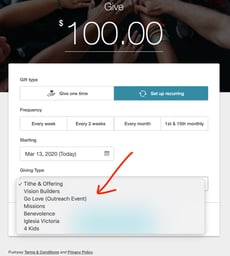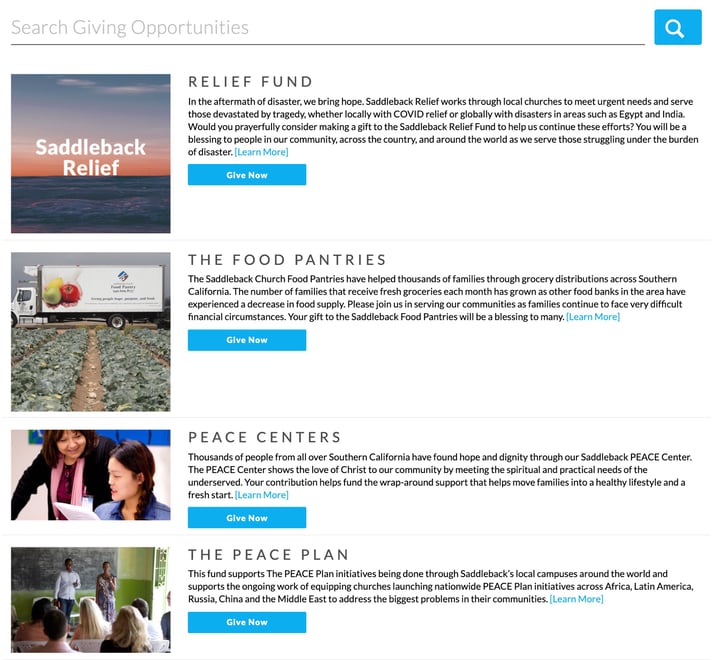What is Donor Engagement?
In a church, at its most organic, donor engagement describes a relationship: Keeping your givers connected to the Body.

Donor stewardship is the process of building relationships with donors after they give a gift. It aids in stewarding givers to grow in the spiritual discipline of giving.
Initially, the term referred solely to the way nonprofits retain donors and turn them into ongoing supporters. The strategy essentially provides a communications plan to keep donors engaged with them. Helping givers move through a process called the Givers Journey increases engagement and generosity.
In the past few years, however, churches have begun to explore donor stewardship. Because today’s givers have changed, ministry leaders want to understand how to nurture generosity in the new digital world. They know that digital connections can be an important part of helping people establish and nurture strong ties with their church.
But does donor stewardship work the same for churches as it does for nonprofits? Is it hard to do? How do you do it?
It’s important to remember that, like all other aspects of growing your members, nurturing generosity in the new digital world still requires a personal touch. Givers must still be taught that giving is an expected spiritual discipline. That it means sharing the blessings of the “abundant life” of Jesus. That they’re banding together with other believers to grow the kingdom of heaven.
But if you plan to use technology to help connect with givers, you must address the top 5 aspects that impact your donor stewardship effectiveness:
The best donor stewardship strategy takes into account the different ways and places that givers are likely to appreciate engaging with their church.
For some older generations, this may be through letters they receive in the mail. Email can be an effective channel for communicating for Baby Boomers. But younger generations prefer text messaging and social media connections. They may also respond better to videos than to written communications.
eCommerce teaches us that most of your givers — especially the younger ones — expect to receiving messages that are personalized to their behavior. It’s truly the secret of giver connection.
Your giving system should address them by name, not “Dear Giver,” but personalization goes beyond that. People are over being bombarded with unwanted communication blasts that don’t relate to them.
So it’s important that your giving platform can segment your email list into different types or classifications of givers, including:
Using giving data in this way allows you to tailor communications to each type of giver and know that your message is more likely to hit the mark. You’ll have something different to say to new and inconsistent givers than you will to infrequent and top givers.
Finally your platform should automate emails that are triggered by different types of events, such as first gift or a giving milestone, such as a dollar amount or a consistency level.
You know that your attendees will connect better with stories that use images and/or video. So each week, you feature the impact of ministry opportunities with vivid pictures and emotional videos in multiple ways throughout your services and building.
But most churches have no images or even descriptions of ministry opportunities on their giving page. Givers may give a planned gift. But if they’re looking for specific ways to help the congregation or community, what will they find? They won’t be inspired to get involved, volunteer or give more generously by a drop-down list of a few written options, as shown above.
Most givers are visually oriented. Choose a church giving software that allows you to easily embed images into your giving page. It should let givers browse through ministries or search for specific ones, then give right in the moment of inspiration. Below is an example of a Vision2 client giving page customized to distinguish between and encourage both tithes and offerings.

In the same way, you’ll want to be sure givers have the opportunity to give in the manner that works best for them. Even if you’re offering online giving, continue to pass the plate or point people to donation boxes. Some people still prefer the sense of worship that an in-person gift provides them.
Offering online giving means constantly notifying people of the various ways they can get to your online giving page, via links in emails and newsletters and giving buttons on your live-stream page. No one will see every notification or link, so don’t worry that it will be too much.
Be sure and look for an online giving giving solution that lets givers give without an account and keeps them on your website (not a third-party’s site) to complete their gifts. These annoying features are known to contribute to gift abandonment.
Remember, you can’t say thank you too often. Don’t settle for generic thank you’s. Instead, make a habit of including the impact of gifts in your thank-you’s: “Your generous gift allow us to …” Personalize the gift acknowledgment with a link to more details about the specific fund they donated to or other ministry projects or classes that are relevant to their demographic.
For more details on creating a donor stewardship plan, download How to Nurture Generosity in the New Digital World.
Vision2 enables all of these gift-improving features … and more. It also streamlines your back office and speaks your accounting system’s language.
Seeing is believing. Reach out to learn more today.

In a church, at its most organic, donor engagement describes a relationship: Keeping your givers connected to the Body.

Why does every sermon start with a picture or story ... and what does that have to do with online giving?

This is the third in a series of 6 posts on growing generosity in the digital age via the Giver Lifecycle. Start here: How to Nurture Generosity in...